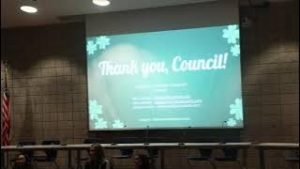Participating in Hands-on Electives from Home

Due to the ongoing pandemic, teachers must attempt to navigate the problem of teaching hands-on classes to e-learners. Some teachers require e-learners to come to the building while others have just made alterations to their classes.
August 23, 2020
Although many aspects of school look different this year, one problem teachers are still navigating is how to teach hands-on classes to e-learners. Some classes, such as 3D Art and Handbells, require more in-person participation than others, such as math or English, sometimes making it difficult for e-learners to engage in the activities from home.
“I teach handbells. Just being able to interact with both e-learners and in-person students simultaneously is almost impossible. I have to kind of set aside intervals throughout class to check in with the e-learners,” Mr. Nathaniel Jones, Music, said.
This situation not only impacts teachers, but students as well. Similar to the teachers, the e-learners are adapting to learning a hands-on subject from their homes.
“I don’t like much about taking the class online. I’d rather be hands-on learning and actually playing bells. I tap a pencil on my desk to the percussion part while I hear the bell choir play their part,” Brelin Dickerson (12) said.
However, teachers are working to creatively overcome this difficulty. For example, Mr. Jones has slightly altered the Handbell program to accommodate both e-learners and in-person students.
No, [I don’t require e-learners to come in because] I feel like that would kind of defeat the purpose of the students choosing e-learning. Instead, [since bells is a hands-on class], they find makeshift percussion instruments so they can still practice the rhythm and the action of playing to continue developing their skills. The e-learners have to be actively participating. For example, while we are playing through the song, they have to be counting and listening in perfect time to line up their percussion parts,” Jones said.
Despite the differences from last year, both students and teachers are learning to adjust to all new learning styles. Although this may be more difficult for hands-on subjects, teachers and students are finding ways to adapt.
“It is a lot different [from last year]. Even though I am a part of the ensemble, I feel a little like I’m not, seeing as I’m at home tapping my pencil on my table instead of bells and a mallet. Last year I was able to ask people around me if I was stuck on counting or note names and I could better understand what I’m doing being in a class where you are being taught hands-on, but this year, all of that is difficult to do online,” Dickerson said.











